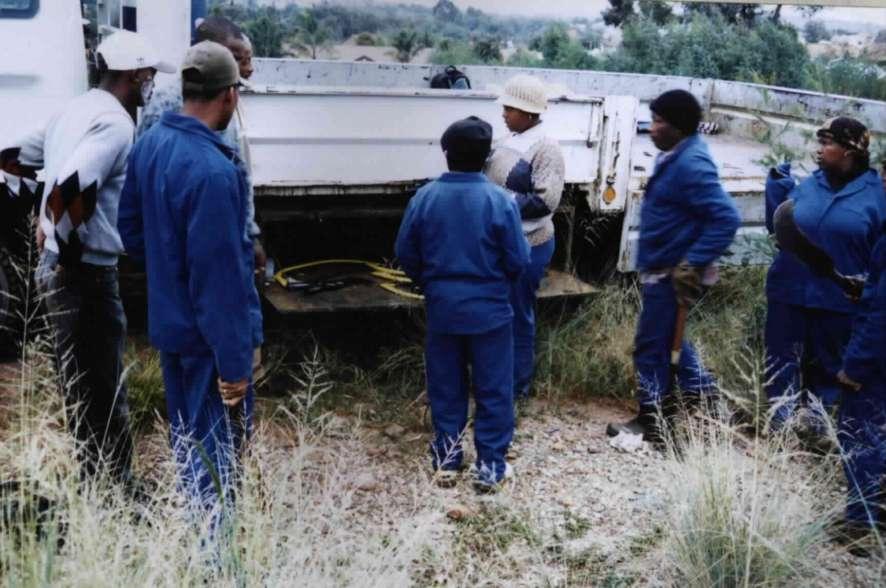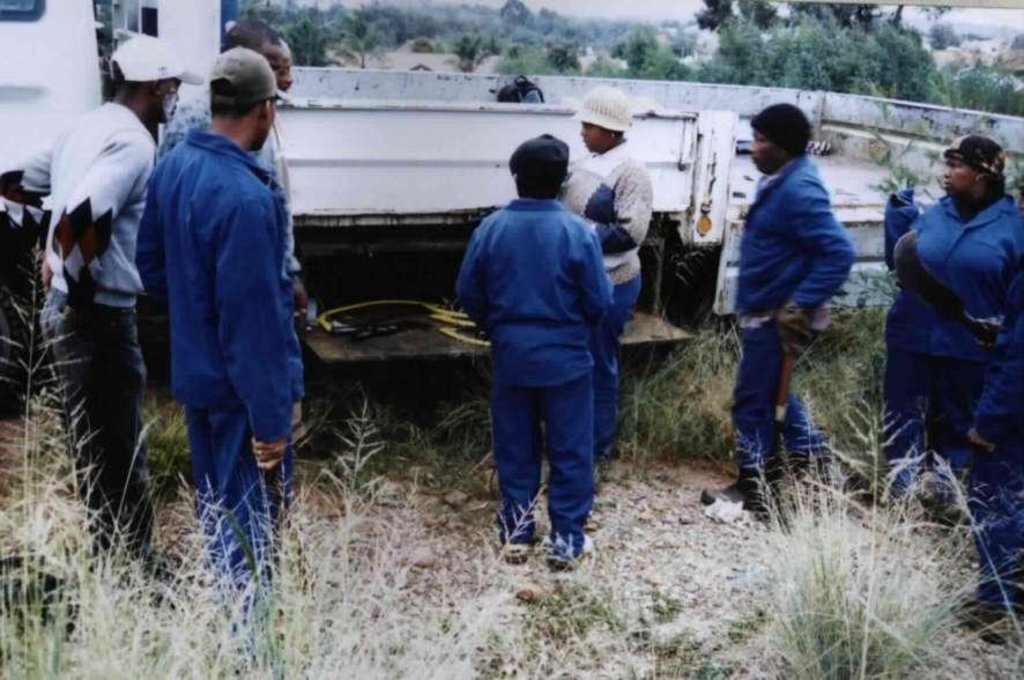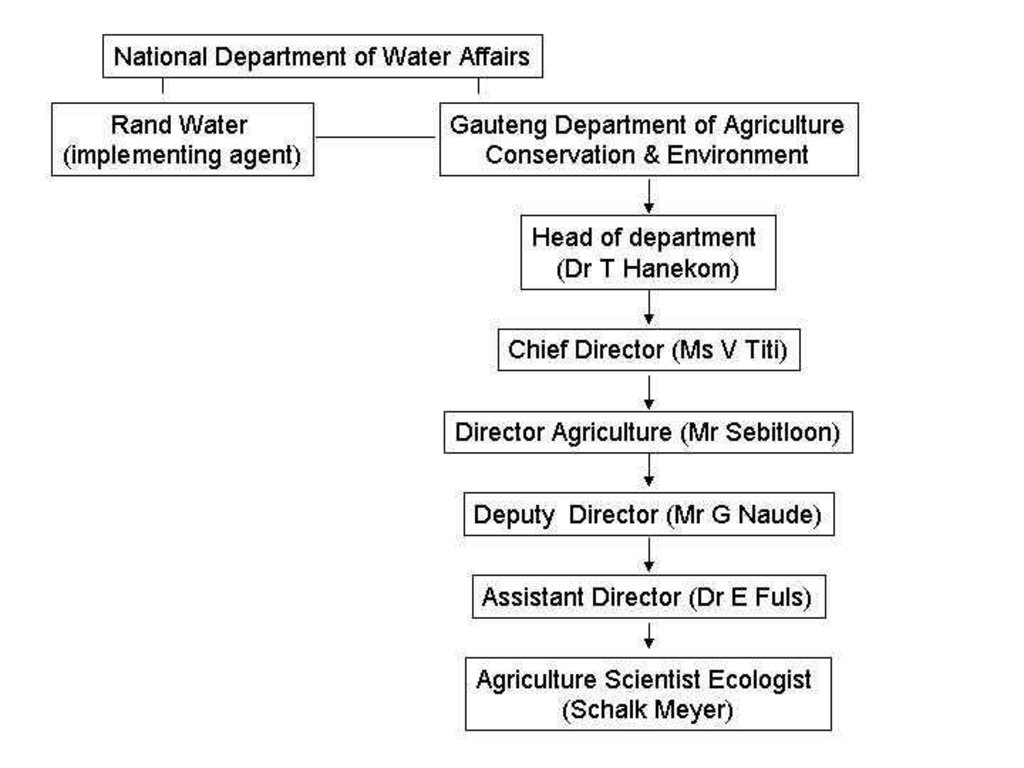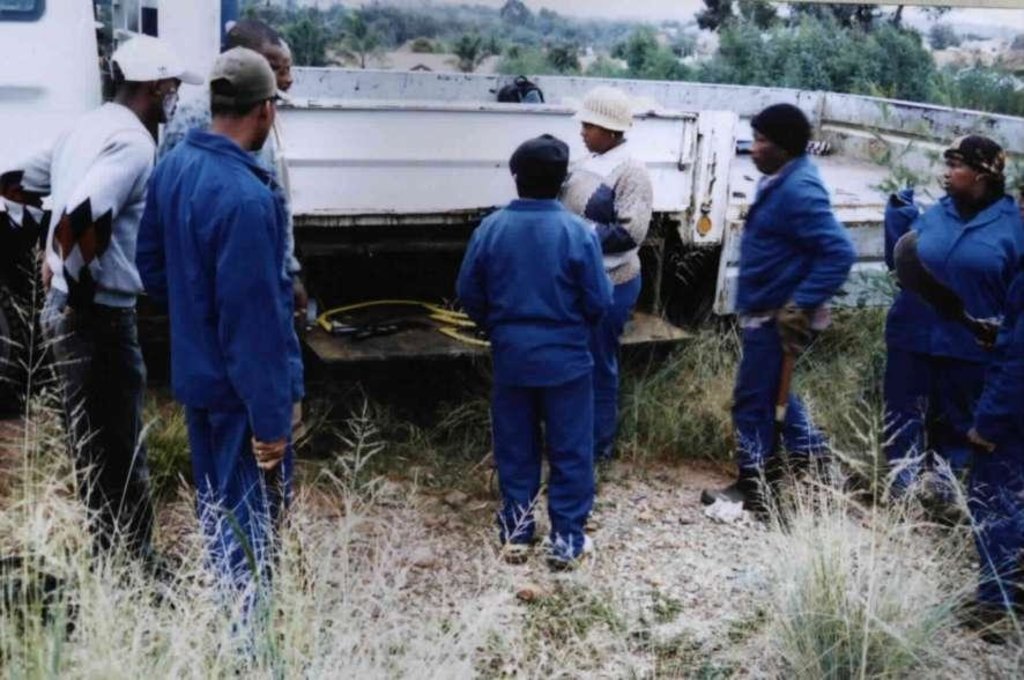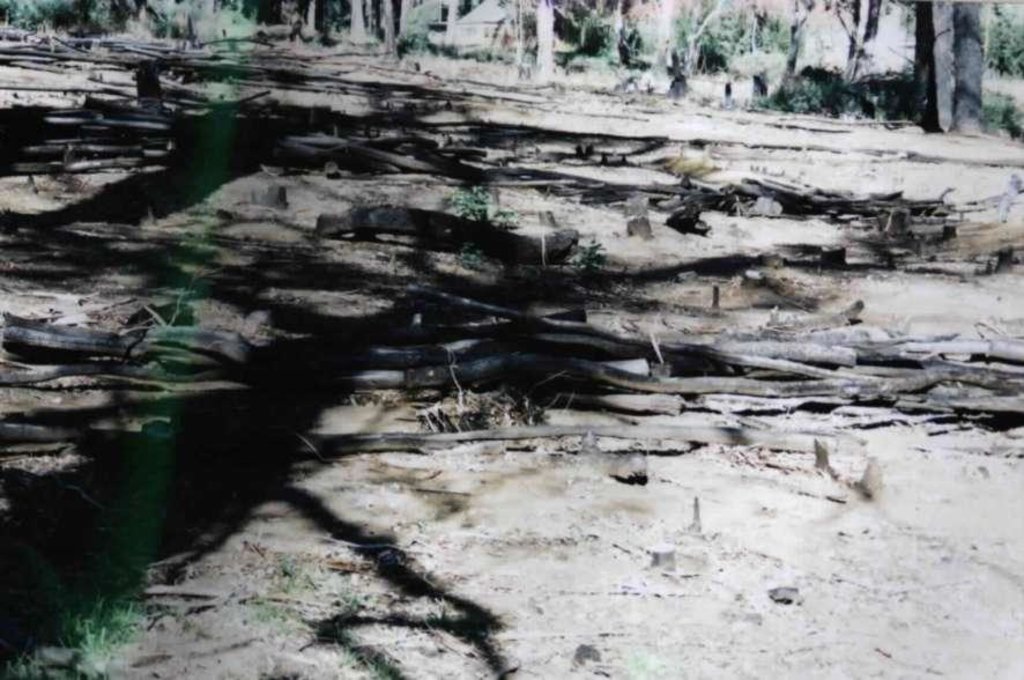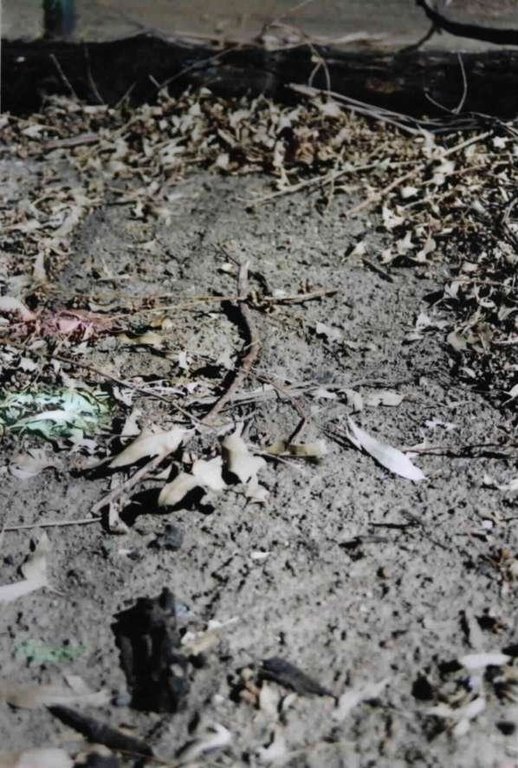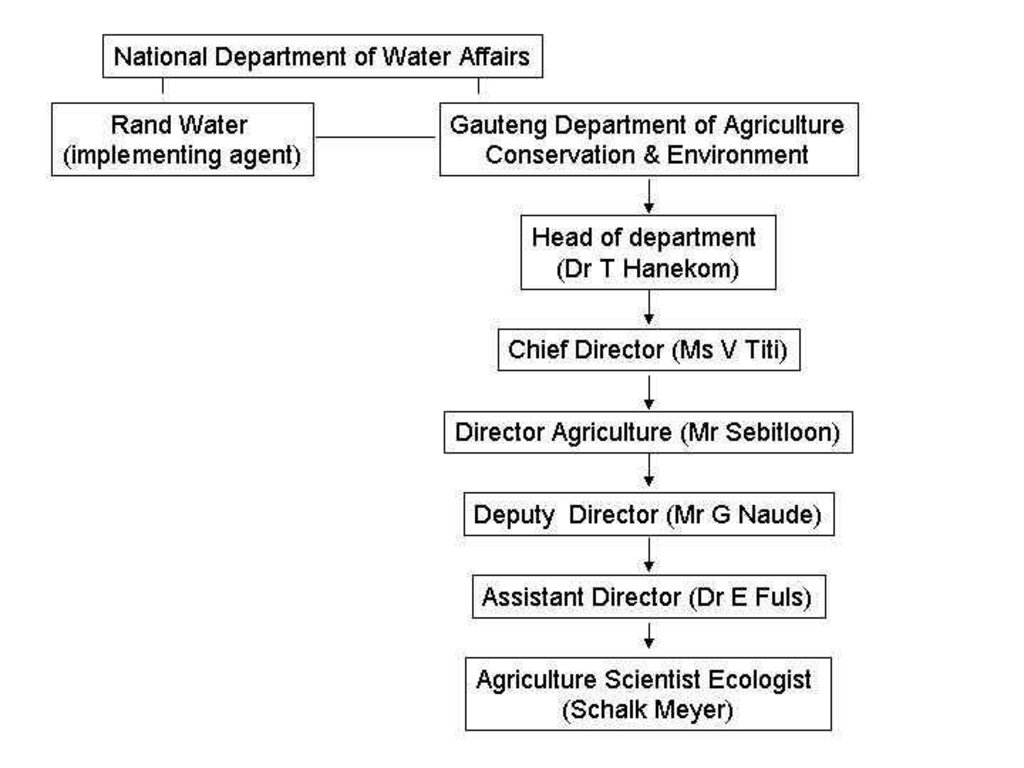Technical and scientific support & Job creation in community sector (poorest of the poor) [南非]
- 创建:
- 更新:
- 编制者: Philippe Zahner
- 编辑者: –
- 审查者: Fabian Ottiger
approaches_2346 - 南非
查看章节
全部展开 全部收起1. 一般信息
1.2 参与方法评估和文件编制的资源人员和机构的联系方式
SLM专业人员:
den Hulk Harmen
011 355 12 66
Gauteng Department of Agriculture and Rural Development
PO Box 8769, Johannesburg 2000
南非
有助于对方法进行记录/评估的机构名称(如相关)
Swiss Agency for Development and Cooperation (DEZA / COSUDE / DDC / SDC) - 瑞士有助于对方法进行记录/评估的机构名称(如相关)
Gauteng Department of Agriculture and Rural Develo (Gauteng Department of Agriculture and Rural Develo) - 南非1.3 关于使用通过WOCAT记录的数据的条件
编制者和关键资源人员接受有关使用通过WOCAT记录数据的条件。:
是
1.4 SLM技术问卷的参考
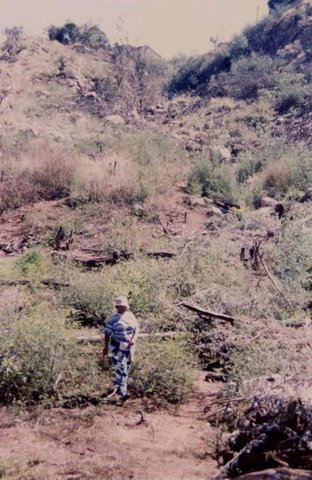
Combating of invader plants and bush packing [南非]
The combating of Invaders to preserve water resources & the rehabilitation of the bare ground by means of brush packing to prevent soil erosion.
- 编制者: Unknown User
2. SLM方法的描述
2.1 该方法的简要说明
To make the community aware of precious resources like water and the preservation of it, the control of alien encroachment, creation of job opportunities and the training of the undeveloped communities.
2.2 该方法的详细说明
该方法的详细说明:
Aims / objectives: The approach objective is to get communities involved in a national project to eradicate alien invaders to conserve the water resource in the main river catchment areas. The objectives of such a project are to make use of labour (job creation) under the poorest of the poor of the rural communities. A group of 25 people was trained in the use of chemicals; cutting down and eradication of trees and alien invaders in an effective manner, as well as different opportunities for entrepreneurs to utilise the wood, for example fire wood and charcoal. The Government is the implementing agent, facilitates and manages the project as well as providing technical advice.
2.3 该方法的照片
2.5 采用该方法的国家/地区/地点
国家:
南非
区域/州/省:
Gauteng Province
Map
×2.6 该方法的开始和终止日期
注明开始年份:
1998
终止年份(若不再采用该方法):
1999
2.7 方法的类型
- 基于项目/方案
2.8 该方法的主要目的/目标
The Approach focused mainly on SLM with other activities (Community upliftment, training (availability of more farm soils), job creation, enhanced grazing capacity.)
Community awareness. Training. Education. Job creation. Uplifting of the poor. Mutual understanding and better communication and labour relations.
The SLM Approach addressed the following problems: Language differences (S.A. contains 11 different official languages). Literacy of the workers. Unqualified people -> expensive training courses. Too many role-players that hampered the initial starting process
2.9 推动或妨碍实施本办法所适用的技术的条件
社会/文化/宗教规范和价值观
- 阻碍
Workers out of different cultures
Treatment through the SLM Approach: Field manager must be appointed that know the people and came out of the same community
法律框架(土地使用权、土地和水使用权)
- 启动
The existing land ownership, land use rights / water rights moderately helped the approach implementation: Improving resource soil and water.
3. 相关利益相关者的参与和角色
3.1 该方法涉及的利益相关者及其职责
- 当地土地使用者/当地社区
Rand Water (implementing agent)
Working land users were mainly women (Policy requires that 60% of the employees of the Government suppose to be black and female.)
- 国家政府(规划者、决策者)
Department of Water Affairs and Forestry
3.2 当地土地使用者/当地社区参与该方法的不同阶段
| 当地土地使用者/当地社区的参与 | 指定参与人员并描述活动 | |
|---|---|---|
| 启动/动机 | 无 | |
| 计划 | 被动 | public meetings |
| 实施 | 外部支持 | casual labour |
| 监测/评估 | 被动 | public meetings; |
| Research | 无 |
3.3 流程图(如可用)
3.4 有关SLM技术选择的决策
具体说明谁有权决定选择要实施的技术:
- 仅限SLM专家
解释:
directive (top-down). Government officials
Decisions on the method of implementing the SLM Technology were made by by SLM specialists alone (top-down). directive (top-down). Experts on the method
4. 技术支持、能力建设和知识管理
4.1 能力建设/培训
是否为土地使用者/其他利益相关者提供培训?:
是
明确受训人员:
- 土地使用者
培训形式:
- 在职
- 课程
涵盖的主题:
Use of hand-tools: chainsaws, handsaws, pangas etc. Also the use of backpack herbicide sprayers
4.2 咨询服务
土地使用者有权使用咨询服务吗?:
是
指明是否提供了咨询服务:
- 在固定中心
说明/注释:
Working for Water, Alien plant eradication; Key elements: Financial act, Catchment areas, Job creation; 1) Advisory service was carried out through: government's existing extension system 2) Advisory service was carried out through: government's existing extension system; Extension staff: mainly government employees 3) Target groups for extension: land users, technicians/SWC specialists; Activities: Job creation & training; Inhouse experience & training
Advisory service is inadequate to ensure the continuation of land conservation activities; Funds were cut and only one follow-up will be done and the clearing of new catchment areas from aliens are stopped due to financial and political instability.
4.3 机构强化(组织发展)
是否通过这种方法建立或加强了机构?:
- 是,适度
具体说明机构的强化或建立程度:
- 本地
具体说明支持类型:
- 财务
- 能力建设/培训
4.4 监测和评估
监测和评估是该方法的一部分吗?:
是
注释:
bio-physical aspects were ad hoc monitored through observations
socio-cultural aspects were ad hoc monitored through observations
economic / production aspects were ad hoc monitored through observations
area treated aspects were ad hoc monitored through observations
no. of land users involved aspects were ad hoc monitored through measurements
management of Approach aspects were regular monitored through observations
There were no changes in the Approach as a result of monitoring and evaluation
4.5 研究
研究是该方法的一部分吗?
是
明确话题:
- 生态学
提供进一步的细节,并指出是谁做的研究:
Research on Rangeland reinforcement
Research was carried out on-farm
5. 融资和外部物质支持
5.1 该方法中SLM组成部分的年度预算
注释(例如主要的资助来源/主要捐助者):
Approach costs were met by the following donors: government (national): 100.0%
5.2 为土地使用者提供财政/物质支援
土地使用者是否获得实施该技术的财政/物质支持?:
是
5.3 对特定投入的补贴(包括劳动力)
- 设备
| 具体说明哪些投入得到了补贴 | 程度如何 | 对补贴做出具体说明 |
|---|---|---|
| 机械 | 充分融资 | |
| 充分融资 | ||
- 农业
| 具体说明哪些投入得到了补贴 | 程度如何 | 对补贴做出具体说明 |
|---|---|---|
| 种子 | 充分融资 | |
如果土地使用者的劳动力是一项重要的投入,那么是不是:
- 以现金支付
注释:
Salary
5.4 信用
是否根据SLM活动的方法给予信用值?:
否
6. 影响分析和结论性陈述
6.1 方法的影响
该方法是否帮助土地使用者实施和维护SLM技术?:
- 否
- 是,很少
- 是,中等
- 是,支持力度很大
Control of alien growth
Did other land users / projects adopt the Approach?
- 否
- 是,很少
- 是,中等
- 是,支持力度很大
6.3 方法活动的可持续性
土地使用者能否维持通过该方法实施的措施(无外部支持的情况下)?:
- 否
若否或不确定,请具体说明并予以注释:
Too expensive
6.4 该方法的长处/优点
| 土地使用者眼中的长处/优势/机会 |
|---|
| Improved grazing (How to sustain/ enhance this strength: Protect area from over grazing and eradicate seedlings and re-growth) |
| Improved live standard with job creation |
| 编制者或其他关键资源人员认为的长处/优势/机会 |
|---|
| Job creation |
| Training |
| Eradication of aliens/protect water resource (How to sustain/ enhance this strength: Follow-up on regrowth) |
| Awareness towards land care |
6.5 该方法的弱点/缺点以及克服它们的方法
| 土地使用者认为的弱点/缺点/风险 | 如何克服它们? |
|---|---|
| Project/work/job creation only for 3 months (for the duration of the project) |
| 编制者或其他关键资源人员认为的弱点/缺点/风险 | 如何克服它们? |
|---|---|
| Maintenance of land user, follow-up on re-growth | Subsidy |
| Financial availability |
7. 参考和链接
7.1 方法/信息来源
- 实地考察、实地调查
- 与土地使用者的访谈
7.2 参考可用出版物
标题、作者、年份、ISBN:
Reports and businessplans
可以从哪里获得?成本如何?
Department of Agriculture & Department of Water Affairs (no costs)
链接和模块
全部展开 全部收起链接

Combating of invader plants and bush packing [南非]
The combating of Invaders to preserve water resources & the rehabilitation of the bare ground by means of brush packing to prevent soil erosion.
- 编制者: Unknown User
模块
无模块


